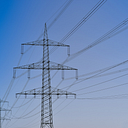The production process often determines the quality of the product, the speed of delivery, and the cost of the product.
The power cable process of ZMS cable company:
Copper rod — Wire Drawing/Annealing — Stranding — Insulation — Sparks-cabling — Inner Lining — Armor--Outer Sheath
Wire Drawing: The rod is drawn into various small-sized thin wires.

Annealing: to prevent the oxidation of copper wire.
Cable Stranding: In order to improve the flexibility and integrity of the wire and cable, letting more than two single wires intertwine in a prescribed direction is called twisting.

The twisting direction of the outermost layer of the stranded conductor is the left direction, and the twisting direction of the adjacent layers is opposite.
Insulation: Plastic power cables mainly use extruded solid insulation layer, which should be tightly extruded on the conductor, and should be easy to peel off without damaging the insulator and conductor.
The surface of the insulating layer should be smooth and even in color. There should be no visible bubbles, blisters and scratches on the cross section.

Sparks: Sparks belong to a folk custom phrase.
When sparking joints, they should be cleaned with borax, the joints should be firm, and should be smoothed and smoothed.
After repair, the outer diameter should not exceed 1.3 times the diameter of the insulated single wire.
The stranded core is not allowed to be welded as a whole, and the repaired core should pass the spark re-inspection, and the length of the repair point should not exceed 8mm.
Shielding Layer: The shielding layer is divided into wrap-around shielding and braided shielding.
Soft round copper wire, tinned round copper wire, copper-magnesium alloy wire and other materials for braided shielding.
Copper tape, copper/plastic composite tape, aluminum/plastic composite tape and other materials are used for wrapping and shielding.

Cable formation: The purpose is also to reduce the cross-sectional size of wire products and make full and reasonable use of space.
But one difference is that the corresponding filler needs to be added during the cable formation process to make the overall structure of the cable more uniform. At the same time, the wire insulation layer must not be damaged during the cable formation process, otherwise the product quality will be seriously affected.
Metal Armor: The armor material uses galvanized steel tape or galvanized steel wire (not only these two materials).
The metal armor is wrapped on the inner lining layer by a leftward spiral gap of a bimetallic tape, and the gap ratio is 40%-50%.
The round metal wire armor is wrapped on the inner lining layer by a single layer of steel wire to the left or the inner layer of double steel wires to the right and the outer layer to the left, and the gap between the steel wires does not exceed the diameter of a steel wire.

Inner lining: a concentric layer that is located under the armor and serves as a metal armor liner and also has a metal sheath’s anti-corrosion effect.
Outer Sheath: The outer sheath should be tightly squeezed on the insulated core, isolation layer or armor layer, and it is easy to peel off without damaging the insulation or isolation layer or armor layer.
The surface of the sheath should be flat, with uniform color and outer diameter, and no defects such as scratches, uneven plasticization and scorching are allowed.
The production process of power cables is complicated, and every step requires special attention.
